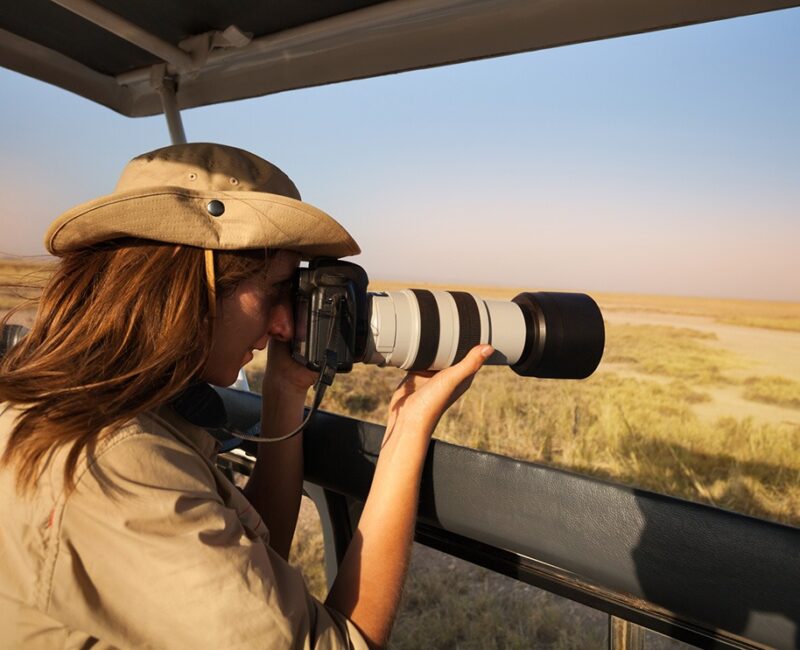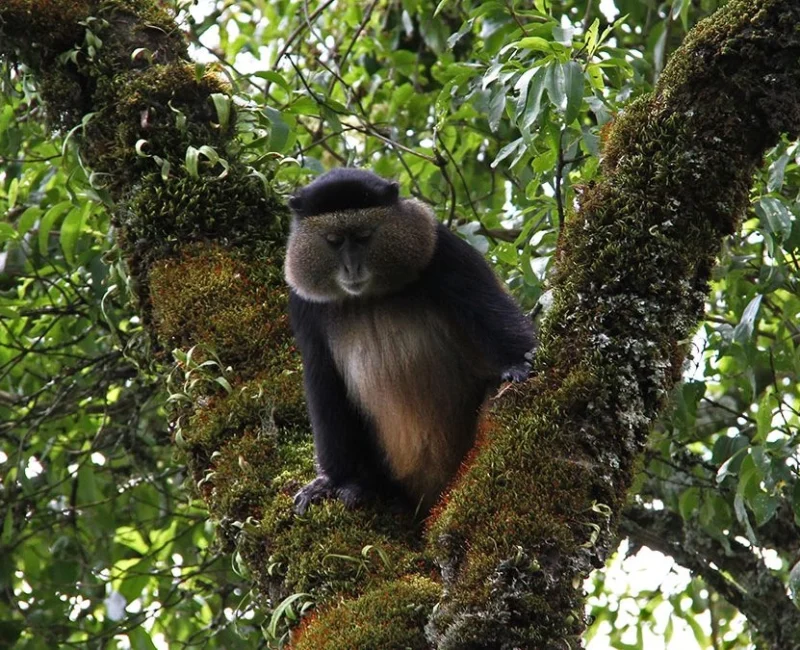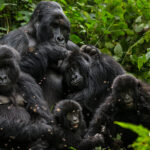
Ultimate Uganda Primate Safari
October 11, 2025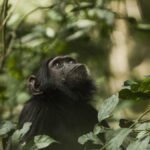
Kyambura Gorge: The Valley of the Apes in Queen Elizabeth
October 11, 2025Seasonal Chimpanzee Behaviour: Understanding Uganda’s Primate Rhythms in the Wild
Seasonal Chimpanzee Behaviour in Uganda offers one of the most fascinating insights into the country’s rich primate life and diverse ecosystems. Uganda, often celebrated as the Pearl of Africa, provides travelers with extraordinary encounters through its Uganda Wildlife Safaris, Uganda Primate Tours, and Uganda Gorilla Safaris.
Where visitors can observe chimpanzees thriving in their natural habitats. These intelligent primates, closely related to humans, display seasonal patterns that reflect their adaptability to changing environments.
During Uganda’s dry and wet seasons, their feeding habits, movement, and social interactions shift in response to rainfall, food availability, and forest conditions.
For travelers planning a Uganda Safari Holiday, understanding these patterns adds depth to the experience, allowing visitors to connect with the rhythms of nature while exploring the breathtaking rainforests that make Uganda Safaris Holidays truly unforgettable.
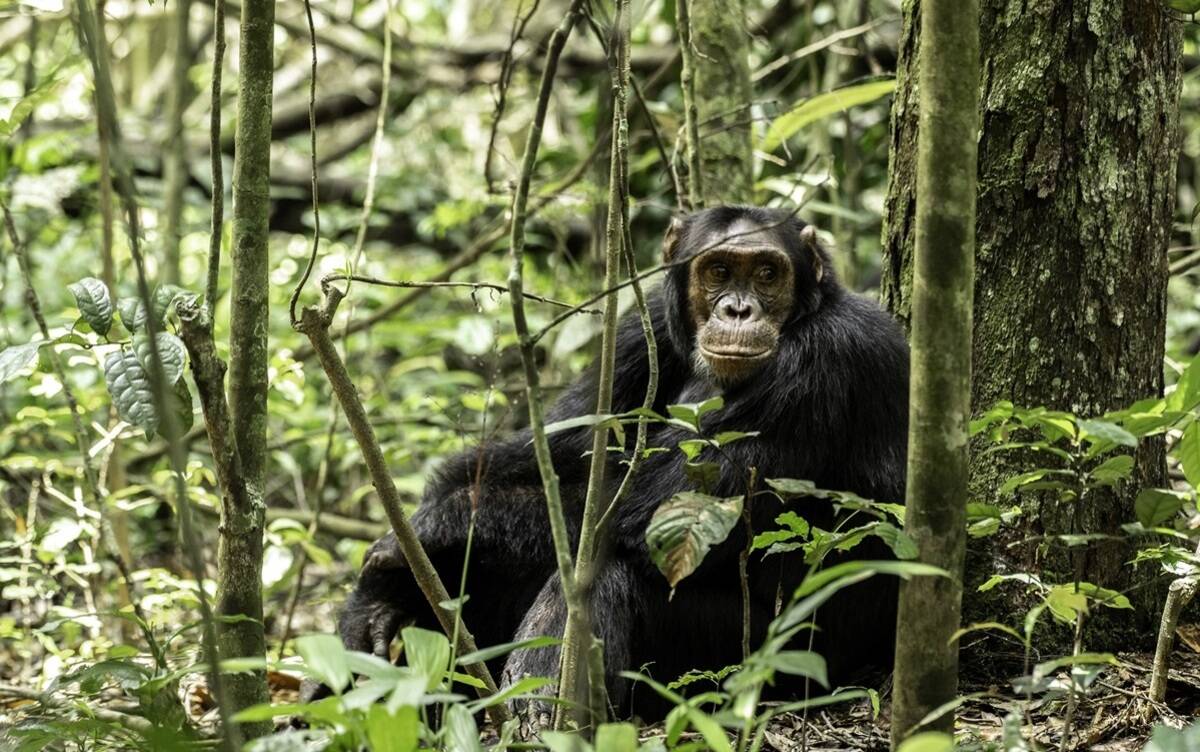
Primates Safaris Africa
Chimpanzee Behaviour and Its Connection to Uganda’s Seasons
The behaviour of chimpanzees in Uganda reflects a deep connection with the environment, which changes dramatically throughout the year. The country experiences two primary dry seasons December to February and June to September.
Two wet seasons March to May and October to November. Each period shapes the chimpanzees’ daily routines, feeding patterns, and social interactions in distinctive ways.
During the dry seasons, the forest canopy becomes thinner, trails are drier, and food sources like ripe fruits are less abundant. This scarcity encourages chimpanzees to cover wider areas as they search for food.
They spend more time moving through the forest, vocalizing to maintain contact with their groups, and showing greater activity levels. Visitors on Uganda Wildlife Safaris during this time are often rewarded with active sightings, as chimps are frequently on the move and easier to track along well-cleared paths.
In contrast, the wet seasons bring lush vegetation, abundant fruit, and thriving insect life. The forest floor becomes muddy, and the dense foliage makes visibility slightly more challenging. However, this season also brings unique advantages.
Chimps tend to stay within smaller areas because food is plentiful and easy to find. They spend more time resting, grooming, and feeding close to the ground.
These quieter, more localized behaviors often create intimate encounters for travelers on a Uganda Safari Holiday, allowing for closer observations of their social interactions.
Dry Season Behaviour: The Active Search for Survival
The dry season is a time of movement, exploration, and heightened energy for chimpanzees. As food sources become scattered across the forest, chimpanzees must travel longer distances each day.
This increased movement makes them more visible and accessible to trekkers exploring parks such as Kibale National Park, Budongo Forest Reserve, and Kyambura Gorge.
Activity and Mobility:
During the dry season, chimpanzees begin their day early, often leaving their sleeping nests at dawn to start foraging. They travel in small groups or subgroups, covering several kilometers as they look for fruits, seeds, and nuts.
Their calls pant-hoots, screams, and barks echo through the forest, helping them locate other members and signal feeding opportunities. This period also sees more dominance displays as males compete for access to limited resources, reinforcing the hierarchy within their “fission-fusion” societies.
Feeding Behaviour:
Food scarcity pushes chimpanzees to rely more on alternative sources such as leaves, bark, and insects. They are omnivorous and exhibit remarkable problem-solving skills to access food.
For example, they may use sticks to extract termites or stones to crack nuts. These tool-use behaviors are commonly observed during dry months when fruits are not abundant, reflecting their intelligence and adaptability.
Tracking Advantage for Safari Travelers:
For tourists on Uganda Wildlife Tours, the dry season offers excellent conditions for chimpanzee trekking. Trails are less slippery, visibility is higher, and guides can easily follow footprints, discarded fruit, or nests.
The experience is physically demanding but highly rewarding, often complemented by sightings of other primates such as red-tailed monkeys or black-and-white colobus monkeys.
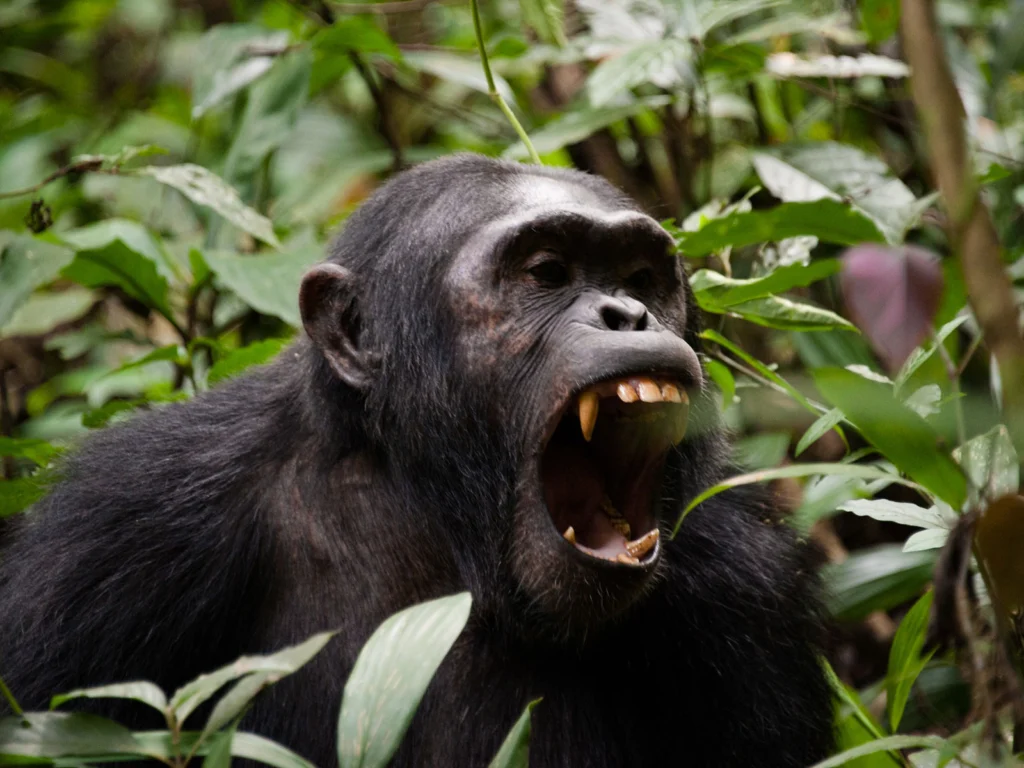
Kibale National Park
Wet Season Behaviour: Rest, Reflection, and Abundance
When the rains arrive in Uganda, the forests burst into life. The wet seasons from March to May and October to November—transform the landscape into a green paradise filled with fruiting trees, flowering plants, and singing birds. For chimpanzees, this period offers comfort and abundance, reducing the need to travel far in search of food.
Feeding and Movement Patterns:
In the wet season, chimpanzees can find most of their food within small territories. They feed on ripe figs, berries, young leaves, and flowers, spending longer periods eating and resting.
With more moisture in the forest, their water needs are easily met, and they spend less time near rivers. They also build their nests lower in the trees to stay close to feeding grounds.
These reduced movements make them more predictable and, at times, easier for rangers to locate, though trails can be challenging for visitors due to mud and dense undergrowth.
Social and Play Behaviour:
The abundance of food also leads to more relaxed social interactions. Groups spend time grooming, playing, and nurturing relationships. Mothers care closely for their young, teaching them skills such as climbing and foraging.
Observing this behavior during a Uganda Safari Holiday can be deeply moving, offering a glimpse into the emotional depth of chimpanzee families.
Photography and Observation Opportunities:
Although weather conditions can be unpredictable, the wet season provides lush, vibrant backdrops for wildlife photography. Travelers who enjoy intimate, less crowded safaris often prefer this season.
Many tour operators include chimpanzee tracking in their Uganda Safaris Holidays year-round. Ensuring that each visitor experiences a different facet of forest life.
Daily Chimpanzee Behaviour: A Glimpse into Their Routine
Regardless of the season, chimpanzees maintain structured daily routines that reflect their intelligence and adaptability. They are diurnal creatures, active mainly during daylight hours.
Their mornings begin with foraging, as they move in groups from one feeding tree to another. By midday, when the sun is at its peak, they rest or engage in social grooming an important behavior that strengthens social bonds and reduces tension within the group.
In the afternoon, chimpanzees continue feeding or travel to new areas before preparing to rest at sunset. As night falls, they build fresh nests high in the trees using branches and leaves.
Nest-building is a remarkable display of craftsmanship, with each chimp constructing a new bed every evening to avoid parasites and ensure safety from predators. These behaviors showcase the ingenuity and social intelligence that make chimpanzees one of the highlights of any Uganda Wildlife Safari.
Social Dynamics and Communication Among Chimpanzees
Chimpanzee societies are among the most complex in the animal kingdom. They live in fission-fusion communities, where the group splits into smaller subunits during the day and reunites later. This dynamic structure allows flexibility in feeding and movement, especially in response to seasonal changes.
Communication among chimpanzees is incredibly advanced. They use a blend of vocalizations, gestures, and facial expressions to express emotions and coordinate activities.
The famous “pant-hoot” call, for instance, helps individuals maintain contact across distances, especially during the dry season when they are spread out. Facial expressions such as grins, pouts, and eye contact play crucial roles in maintaining peace or asserting dominance.
For travelers on a Uganda Safari, witnessing these interactions firsthand provides profound insight into human evolution. The emotional intelligence displayed by chimpanzees mirrors many aspects of our own social lives, emphasizing the importance of conservation and ethical wildlife tourism.

Kibale National Park
Tool Use and Learning: The Signature of Intelligence
One of the most remarkable aspects of chimpanzee behaviour observable throughout the year is their ability to use and create tools. These primates exhibit a form of cultural learning passed from one generation to the next.
They craft tools to fish for termites, use twigs to probe ant nests, and employ leaves as sponges to collect water. During dry months, this skill becomes even more critical as food sources diminish.
Young chimpanzees spend years observing their mothers and older siblings, learning essential survival techniques. This long learning period is a sign of their cognitive complexity and emotional development.
For visitors interested in educational Uganda Wildlife Tours, observing chimpanzees in their natural environment offers a powerful connection to the roots of human intelligence.
Cultural Experiences Near Chimpanzee Habitats
A Uganda Safari Holiday centered on chimpanzee tracking often includes cultural experiences that enrich the journey. Around chimpanzee destinations like Kibale Forest, Kyambura Gorge, and Budongo Forest, local communities offer authentic encounters that connect travelers with Uganda’s heritage.
Visitors can join traditional dance performances, explore local coffee farms. They can also participate in conservation projects that support both wildlife and community development.
Eco-lodges near these forests emphasize sustainable tourism, blending luxury with conservation. Guests can engage in tree planting, guided forest walks, and educational sessions about primate protection.
These initiatives not only enhance the safari experience but also promote responsible travel ensuring that Uganda’s wildlife and communities thrive together.
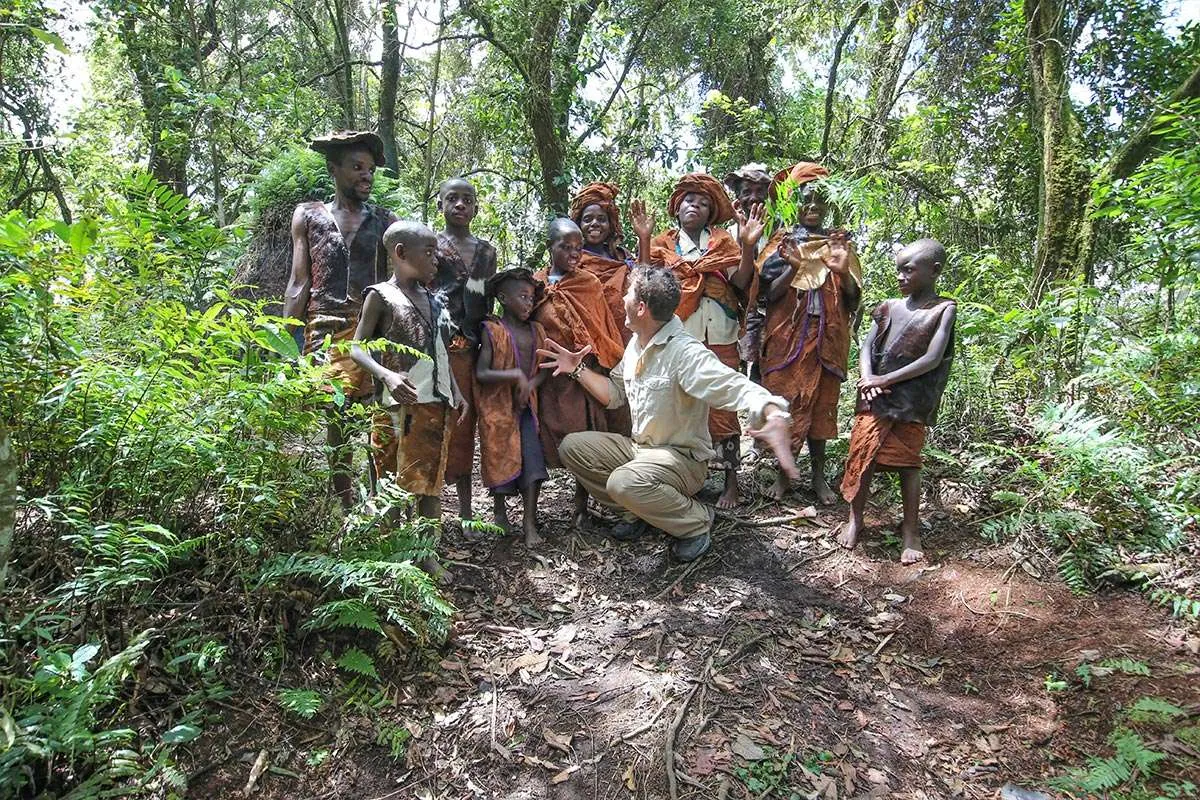
Batwa people
Planning the Best Time for Chimpanzee Trekking in Uganda
For travelers wondering, “When is the best time to see chimpanzees in Uganda?”, both the dry and wet seasons have their rewards. The dry season offers better hiking conditions, while the wet season provides richer scenery and more relaxed chimpanzee behavior.
Trekking permits, issued by the Uganda Wildlife Authority, are limited to protect the animals, so booking early through reputable Uganda Safari operators is essential.
Visitors should wear waterproof boots, long-sleeved clothing, and carry insect repellent and water. Hiring a local porter not only eases the trek but also supports local livelihoods.
Experience the Seasons of the Wild on a Uganda Safari
Understanding seasonal chimpanzee behaviour deepens the appreciation of Uganda’s incredible biodiversity. Whether observing energetic chimpanzees during the dry season or watching them rest and play under the rain-soaked canopy, every moment tells a story of adaptation and survival.
This experience complements other adventures like Uganda Gorilla Trekking in Bwindi or golden monkey tracking in Mgahinga, creating a complete Uganda Wildlife Safari experience.
For travelers seeking meaningful encounters, Uganda offers more than just a safari it offers a journey into the rhythm of nature. Every trek, every echoing call of the chimps, and every cultural interaction reveals the soul of Africa’s wilderness. To witness it firsthand is to understand why Uganda Safaris Holidays remain among the most enriching adventures on Earth.

